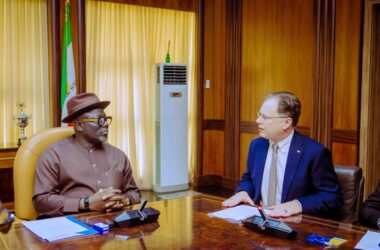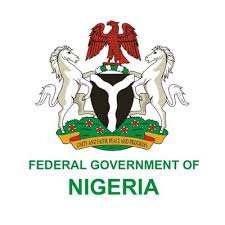As federal government weigh plans to resume economic activity against the threat of furthering the spread of COVID-19, some states have forged ahead with reopening plans with a clause to holding firm with social distancing measures.
In public health, social distancing, also called physical distancing, is a set of non-pharmaceutical interventions or measures intended to prevent the spread of a contagious disease by maintaining a physical distance between people and reducing the number of times people come into close contact with each other.
Analysts expressed concerns over the compliance of social distancing by Customers across the country because reports revealed that most customers are finding it difficult to comply with social distancing measures. For these analysts, the report of how customers are faulting social distancing measures remain a big threat to public health in Nigeria.
To learn more about what strategies could promote continued compliance with long-term social distancing as those measures remain, CONSUMERS ASSEMBLY reached out to an economist, Femi Fagbemi, whose work focuses on the intersection of behavioral economics and public health.
According to him, the factors that may encourage individuals who may not feel sick to comply with prolonged social distancing, even if it conflicts with their individual interests
are a combination of factors. The pandemic safety measures have highlighted how different populations are affected differently and respond differently to information and guidance. Those with secure jobs, who can work remotely and continue to receive their salary, are having an easier time complying, of course. Compare this to people who are unemployed or who are self-employed or business owners, those whose incomes are threatened or diminished.
He pointed out that, the extent to which people are willing to make personal sacrifices for the greater good—that is, the civic mindedness of the population is important. One feature of this experience is that individuals pay an immediate cost, but the benefits are not immediately perceived by the individual as they accrue to society more broadly. The benefits materialize only with a delay which can make it hard for individuals to comply with social distancing measures.
Speaking on what government might do to encourage people to continue following social distancing measures, he stated that; “clear communications from the authorities, realistic expectations about the protracted nature of social distancing, and ensuring that the benefits of the actions we’re all taking is evident are necessary strategies to encourage compliance. We should appeal to our collective civic mindedness, and we might even need to use fines and sanctions to discourage transgressors, though without going too far, of course.”
“people who expect the measures to last a relatively short period of time—a few weeks, for instance—are less willing to comply if the measures are extended for a longer period of time. We call this a “negative surprise.” The opposite can also be true. People who expect measures to last for months but instead find out they will last for a shorter period of time might be more compliant.” He added.
Explaining how Consumer behavior will change post COVID-19, he held that; “As the consumer behavior changes, retailers will witness an increasing dependency on the online orders. Projecting on some of the behaviour and channel mix we are witnessing in markets like China, the volume mix will look something like as depicted in the table below. As dependency on the marketplaces increase (and hence their clout), so will the possible margins being charged by them.”
Retailers will have two options. They can continue to fulfil orders via online aggregators and hence lose a higher chunk towards margin and affecting bottomline. Or they can set up their own brand in order to restrict the revenue bleed (not to mention also reaping other long-lasting benefits viz. fostering brand loyalty etc.). Nike pulling back from selling on Amazon to focus more on its direct-to-consumer business being a case in point.” He noted.
Also speaking on this issue to CONSUMERS ASSEMBLY, a communications expert, Denham Sola said; “mixed messaging never helps, and it’s one potential reason for global severe COVID-19 outbreak. In the world, we saw that different people had different expectations for how long the emergency would last. This is largely true in the U.S. as well. Recent polling from various sources indicates that although Americans now generally recognize that COVID-19 is a “major threat,” Democrats are more concerned about it than Republicans are. This suggests that people are receiving different messages about COVID-19, and that they are placing different weights on them depending on their political leanings. This is worrisome if it leads to some people not taking the necessary precautions due to a false belief that the threat is not serious.”
According to him, “we’ve seen that leaders did realize—some earlier, some later—that there wasn’t really a tradeoff between the two. What I mean is that the pandemic is a public health challenge, but it is also a big threat to the economy. In order to avoid an even bigger economic collapse, social distancing has been necessary. Many economists have pointed out that what looks like a tradeoff is not a tradeoff at all—doing what’s good for public health is also what’s good for the economy. In March, economist Luigi Zingales produced a cost-benefit analysis of the economic shutdown, concluding that even under conservative estimates, cost-benefit calculations implied that it would be better to keep the economy closed to avoid the deaths that would occur from a rampant pandemic. Preserving public heath also means preserving our economic health.”
While reacting to the reopening of the economy, he posited that; ‘it’s clear that the cost of shutting down the economy is high and can’t go on forever. The questions we should be asking our leaders are: “Are you taking advantage of this time and sacrifice we’ve made, how have you used it to prepare for the future? Have you positioned us to safely reopen and restart the economy?”









